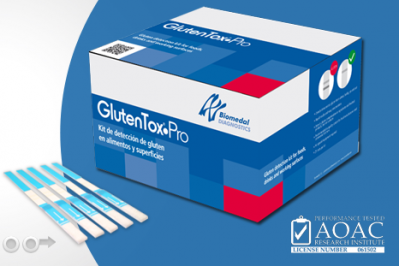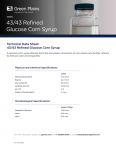Allergens survey highlights risks in industry practice

The lack of a coordinated and corporate-level allergen system, indicated by 29% of respondents, was described by SGS as “concerning” – particularly as an allergen control plan was said to be “one of the fundamentals of effective allergen management”.
Meanwhile allergen thresholds and the definition of internationally accepted allergen action levels (thresholds) were identified as the biggest knowledge gap by 67% of respondents in the Current Industry Practices on Allergen Control and Management SGS survey.
Through appropriate labelling, food manufacturers have a responsibility to identify allergenic ingredients within their product recipes - plus any that have the potential to contaminate the production process.
However, Dr Evangelia Komitopoulou, global technical manager at SGS, said: “Lack of consensus on universally agreed acceptable levels for allergens means that allergen risks are interpreted in different ways across industry leading to the overuse of the fail-safe precautionary labelling.
“Not only does that add to consumer confusion but it also forces consumers to largely ignore labels putting them at extra risk.
“At the same time, differing allergen-labelling regulations have increased operational complexity. As a result, labelling errors and product recalls have increased, reinforcing the need for harmonisation across national boundaries.”
Labelling rules
In almost every market, legislation requires the mandatory declaration of allergenic compounds that are intentionally added into the product.
Under EU law food manufacturers must label 14 allergens – peanuts, tree nuts, soybeans, mustard, eggs, lupin, milk, fish, cereals containing gluten, sesame, celery, sulphur dioxide, molluscs and crustaceans.
But in the US it is the ‘big eight’ - milk, eggs, peanuts, tree nuts, soybeans, wheat, fish, and shellfish.
Cross contamination
When the possibility of cross contamination has been identified, through for example Hazard Analysis and Critical Control Points (HACCP), then precautionary labelling advises consumers that an allergen may be accidentally present. According to SGS, this should only be used where cross contact was likely to occur and health risks may be anticipated.
The survey found that HACCP was the most popular allergen management tool in use (73%). It said that the industry’s approach to allergen management, based on the HACCP concept, significantly reduced allergen risk by implementing appropriate controls, such as segregation, sanitation and traceability across the supply chain.
However, “the absence of defined allergen threshold levels means all allergens are treated as posing the same level of risk. As a result, food manufacturers err on the side of caution.
“Some 64% of respondents say that the potential presence of allergens in their products is communicated via precautionary ‘may contain’ labelling.
“This results in the application of this type of labelling to more products than strictly necessary.”
SGS said that improved definition of thresholds would facilitate more effective allergen risk assessment and management.
The survey attracted 230 responses from 46 countries.














